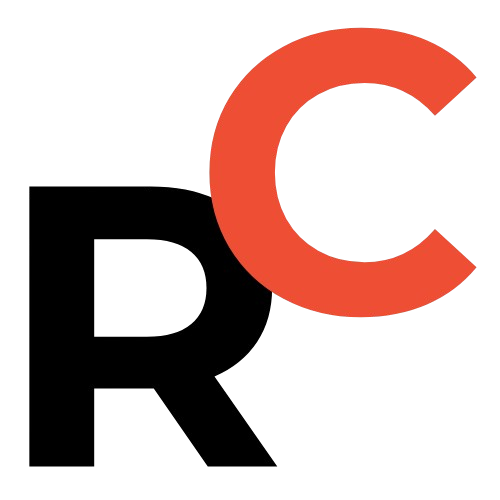Key Points
- “AI applications will explode next year” — Zhu Xiaohu (朱啸虎), GSR Ventures (金沙江创投): Chinese firms can stand out through differentiated product power and supply-chain advantages.
- Commercialization favors retention over hype: focus on retention metrics and sticky features; meeting-summary apps illustrate fast monetization (Plaud.ai cited at roughly ¥10.95 billion ≈ $1.5B).
- Top startup tracks: vertical professional services (healthcare, finance), specialized assistants & translation, and AI-enabled hardware (e.g., AI眼镜, AI PCs, automotive terminals).
- Conference scale and momentum: nearly 10,000 m² of tech exhibits + 5,000 m² marketplace; >200 tech companies, >100 robotics/component firms, and >30 new-product debuts.

AI applications will explode next year — that was the headline takeaway from Zhu Xiaohu (Zhu Xiaohu 朱啸虎), managing partner at GSR Ventures (Jīnshā Jiāng Chuàngtóu 金沙江创投), at the 2025 Inclusion·Bund Conference on September 11, 2025.
Quick snapshot
Who spoke: Zhu Xiaohu (Zhu Xiaohu 朱啸虎), long-time AI investor and managing partner at GSR Ventures (Jīnshā Jiāng Chuàngtóu 金沙江创投).
Where: 2025 Inclusion·Bund Conference opening ceremony and main forum.
Core claim: Major surge in AI applications next year, with Chinese companies positioned to win through differentiated product power and supply-chain advantages.

Find Top Talent on China's Leading Networks
- Post Across China's Job Sites from $299 / role
- Qualified Applicant Bundles
- One Central Candidate Hub
Your First Job Post Use Checkout Code 'Fresh20'

Why commercialization will favor “boring” but sticky technology
Zhu’s rule: commercial success hinges on retention metrics, not hype.
Meaning: consumer trials driven by buzz are useful, but sustained retention and repeat payment are the real monetization levers.
Takeaway for founders: focus on stable, mature, and sticky features that drive repeat usage rather than chasing flashy demos.

ExpatInvest China
Grow Your RMB in China:
- Invest Your RMB Locally
- Buy & Sell Online in CN¥
- No Lock-In Periods
- English Service & Data
- Start with Only ¥1,000

Meeting-summary apps: a clear example of rapid commercialization
Why they matter: meeting-transcription and summarization tools are simple to build and easy to monetize.
Standouts: the U.S. product Abridge, China’s Plaud.ai, and Alibaba’s DingTalk (DingTalk 钉钉) which quickly added similar features.
Valuation note: reports described Plaud.ai’s valuation last year as “several billion US dollars” (十几亿美元), and the piece gives a concrete figure of roughly ¥10.95 billion RMB (≈ $1.5 billion USD) as the scale of interest.
Lesson: low technical barrier + large addressable market + clear ROI = fast commercialization.

Resume Captain
Your AI Career Toolkit:
- AI Resume Optimization
- Custom Cover Letters
- LinkedIn Profile Boost
- Interview Question Prep
- Salary Negotiation Agent

AI agents and the limits of short-term substitution
Current reality: AI agents (AI zhìnéngtǐ AI智能体) can already substitute for humans in well-defined, narrow tasks — ordering food, translations, and other focused workflows.
Limit: for complex, multi-step interactive scenarios, breakthroughs aren’t imminent.
Big picture: realization of truly superintelligent AI (chāojí réngōng zhìnéng 超级人工智能) remains a long-term research objective, not a short-term commercial outcome.

User entry points: multimodal search and AI glasses
Trend: multimodal search is rising as a major UI vector for AI.
Potential super entry point: AI glasses (AI yǎnjìng AI眼镜), which are moving from passive to proactive interaction according to Zhang Lei (Zhāng Léi 张雷), vice president of Xiaomi Group’s (Xiǎomǐ Jítuán 小米集团) phone division.
High-frequency use cases: snapshot-based tasks, real-time translation, and short-context helper functions.
Barrier checklist:
- Display technology maturity;
- Interaction paradigms and UX patterns;
- Viable business models beyond early adopters;
Short-term reality: AI glasses are an extension of smartphones in their early stage rather than a mass-market replacement.

Healthcare: a core, high-need application area
Why healthcare: it combines low-frequency medical needs with high-frequency health touchpoints — a natural fit for AI-assisted workflows.
Perspective from Ant Group (Mǎyǐ Jítuán 蚂蚁集团): Han Xinyi (Hán Xīnyì 韩歆毅), CEO of Ant Group, framed AI as a “doctor’s assistant,” not a replacer.
Clinical implication: large models can augment clinicians, helping shift doctors from narrow specialties toward broader general practice and allowing physicians to focus on complex cases.

Software disruption: fewer people, more capability
Zhu’s view: AI is already reshaping software demand, particularly for low-code/no-code and collaborative editing tools.
Example: platforms like Figma (Figma) could see the size of collaborative projects shrink — tasks that once required large teams might be done by much smaller teams.
Investor stance: collaboration software will persist, but the market size could be “far smaller than before,” leading investors to avoid many products in that category.

Hardware: an “AI redo” of endpoints
Conference theme: hardware must be rethought under AI capabilities — an “AI redo” of endpoints is coming.
Key endpoints to watch: AI glasses, AI PCs, autonomous-driving terminals, and other devices that break legacy interaction models.
China’s structural advantages: lower supply-chain costs, production efficiency, and a dense ecosystem give domestic companies critical levers on the global stage.

Three core startup tracks for the near future
Speakers’ consensus: three primary tracks look most promising for AI startups in the near term.
- Professional services in vertical domains — medical and health services, financial services, and other regulated verticals where domain expertise adds defensibility.
- Specialized assistants and translation verticals — task-focused AI assistants, translators, and niche language tools that deliver measurable ROI.
- AI-enabled hardware endpoints — AI glasses, AI PCs, automotive terminals, and devices that reshape human-computer interaction.
Timing: Zhu predicted infrastructure maturation will set up 2026 for an explosion of AI applications and possibly the next big consumer winners in China (the next ByteDance (Zìjié Tiàodòng 字节跳动), Kuaishǒu (Kuàishǒu 快手), or Xiǎohóngshū (Xiǎohóngshū 小红书)).
Advice to founders: seize the “golden window” for application deployment now.

Conference scale and atmosphere
Scope: the Bund Conference exhibition area was upgraded this year with technology as the core focus.
Numbers from coverage: nearly 10,000 square meters of technology exhibits and a 5,000-square-meter tech marketplace — the largest scale to date.
Participation: more than 200 tech companies, over 100 robotics and component companies, and more than 30 brands debuted new products.
Focus areas: scenarios where AI and robotics enter industry and daily life, showcasing recent research and product rollouts.

Bottom line for investors, founders, and builders
Simple message: practical, retention-oriented product design — even when it’s “boring” — will win the next phase of AI commercialization.
China’s edge: hardware supply-chain advantages and ecosystem density give domestic firms a shot at leading global winners.
Execution priorities: sustained user value, measurable retention, and real monetization — not flash and hype.

Practical takeaways & tactical checklist
For founders:
- Prioritize retention metrics over vanity adoption numbers.
- Target verticals with rigid demand (healthcare, finance, legal) for defensibility.
- Explore tight problem scopes for AI agents where substitution is already viable.
- Design products for repeat workflows; monetize small, repeatable wins.
- Consider hardware partnerships if your value prop needs specialized endpoints.
For investors:
- Look for differentiated product power and measurable retention.
- Avoid crowded collaboration categories where AI shrinks total market opportunity.
- Favor teams that combine domain expertise with realistic go-to-market plans.

SEO & linking opportunities
Anchor text ideas: “AI commercialization,” “meeting transcription apps,” “AI glasses use cases,” “healthcare AI assistants,” “AI-enabled hardware,” “low-code/no-code disruption.”
Suggested internal pages to link from: product pages for AI features, case studies on retention-driven growth, investor memos on AI hardware supply chains, vertical AI whitepapers (healthcare, finance).

Quotes to highlight
“If you chase commercialization, you want what we call boring technology — not always the sexiest stuff.”
“Collaboration software won’t disappear, but its market size will be far smaller than before.”
“All hardware must be rethought under AI capabilities — the ‘AI redo’ wave is coming.”

Preserved facts and figures
Event date: 2025.09.11.
Exhibit scale: nearly 10,000 m² tech exhibits + 5,000 m² tech marketplace.
Participation: >200 tech companies, >100 robotics/component companies, >30 brands debuted products.
Plaud.ai valuation context: described as “several billion US dollars” (十几亿美元) in reporting, with a concrete figure roughly ¥10.95 billion RMB (≈ $1.5 billion USD) noted in coverage.

Why this matters to global readers
Investors: policy and supply-chain realities in China matter for hardware-enabled AI plays and for evaluating defensibility in vertical software.
Founders: product-led growth anchored on retention beats headline demos for long-term success.
Tech builders: think multimodal UX, pragmatic agents, and hardware integration where it meaningfully reduces friction.
Marketers: position real ROI and repeat value, not speculative AI capability, in go-to-market messaging.

Final note
AI applications will explode next year, and the companies that win will be the ones who build differentiated product power, drive retention, and exploit China’s hardware and ecosystem advantages.

References
- 朱啸虎:明年AI应用将迎来大爆发,中国企业有望通过差异化“产品力”脱颖而出 – 澎湃新闻
- 朱啸虎:明年AI应用将迎来大爆发,中国企业有望通过差异化“产品力”脱颖而出 – 东方财富网
- GSR Ventures (company site) – GSR Ventures
![China's MIIT Signals Major Push for General and Industry-Specific AI Large Models [FreshFromChina]](https://freshfromchina.com/wp-content/uploads/2025/05/China_s_MIIT_Signals_Major_Push_for_General_and_Industry-Specific_AI_Large_Models____FreshFromChina-150x150.png)

